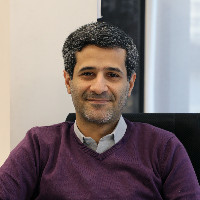Identify the Requirements for Training How to Deal with Earthquakes by IRIB TV Channels
The earthquake is one of a kind of destructive natural disasters that has left many financial and Casualties losses in our country. This issue takes into consideration the need for public education to prepare for earthquake preparation. General education can be provided through the Islamic Republic of Iran television, but it is necessary to explain the roles and requirements of the television to provide these trainings. This research was conducted with the aim of evaluating such roles and requirements using qualitative content analysis method. In this research, deep interview was conducted with 16 experts selected by purposeful sampling. Open and axial coding of the interviews was conducted with MaxQDA2018 software. The findings of this study indicate that television should offer its educational functions for "before the crisis", "During the crisis" and "after the crisis". Meanwhile, TV should provide these trainings in "direct and serious" and "indirect and entertainment-based" formats. In addition, in order to play educational role of television, it must use its capacities like "technical and content", "cultural", and "organizational and inter-organizational" be overcome barriers "in-organizational" and "out-organizational". TV should fulfill the requirements in four dimensions: "Targeting and "Planning", "Audience and Needs Assessment", "Organizational", and "Content", which play their role in providing earthquake exposure training in order to make public readiness.
The earthquake is considered one of the most devastating natural disasters in the world, and Iran is among the most vulnerable earthquake countries in the world. Iran's seismicity creates the necessity for the general education of the earthquake. Media is one of the most important tools that can be used for this purpose. The role of media education in dealing with natural disasters has been studied in several studies [2; 4]. In this article, we review the requirements that are required to provide this training. In addition, we discuss the nature of the training in this research and identify the media format for the training.
Qualitative content analysis method was used in this research. Qualitative content analysis is a method used to subtly interpret the content of textual data through the process of systematically coding and identifying topics and patterns [3]. The three stages of preparation, organization and reporting are categorized in the analysis of qualitative content, as well as qualitative research [1]; the process of performing these three stages in analyzing qualitative content based on seven steps including: 1. setting the research questions 2. selecting the desired sample 3. defined Content Analysis Approach 4. Planning the Encryption Process 5. Implementing the Encryption Process 6. Determining Reliability and Reliability 7. Analyzing the results of the encryption process. According to mentioned steps, deep interview was conducted with 16 experts selected by purposeful sampling. Open and axial coding of the interviews was conducted with MaxQDA2018 software.
The findings of this study indicate that television should offer its educational functions for "before the crisis", "During the crisis" and "after the crisis". Meanwhile, TV should provide these trainings in "direct and serious" and "indirect and entertainment-based" formats. In addition, in order to play educational role, television must use capacities like "technical and content", "cultural" and "organizational and inter-organizational" be overcome barriers "in-organizational" and "outsourcing". Tv should fulfill the requirements in four dimensions: "Targeting And "Planning", "Audience and Needs Assessment", "Organizational" and "Content" that play their role in providing earthquake exposure training in order to make public readiness.
The findings of this study show similarities with other existing studies, but Iran's television tries to provide trainings to create a public readiness to deal with earthquake by using the crisis management structure in the organization, the use of domestic and foreign experts, the allocation of budgets and appropriate training programs, and the use of modern media capabilities.
Crisis , earthquake , Education , television , audio , video , general preparation
-
The Effect of Correction Intervention on Engagement of Users Sharing Fake News on X (Twitter)
Mohammad Hasan Ebrahim Kani, Reza Pourhosein*, Siyavash Salavatian
Rooyesh-e-Ravanshenasi, -
Business Ethics in Media Industries: A Study of Corporate Social Responsibility Strategies of Internet Service Providers in the World
*, Tohid Soltani
Journal of Media Management Review, -
An Overview of a Platform's Brand Resilience in the Face of Brand Risk and Crisis
*
Journal of Media Management Review, -
Comparison of the usability of the BBC Persian Website and IRINN Website from the viewpoint of the students of Tehran University
Taher Roushandel Arabtani, Kobra Samadi, *
Journal of New Media Studies,



